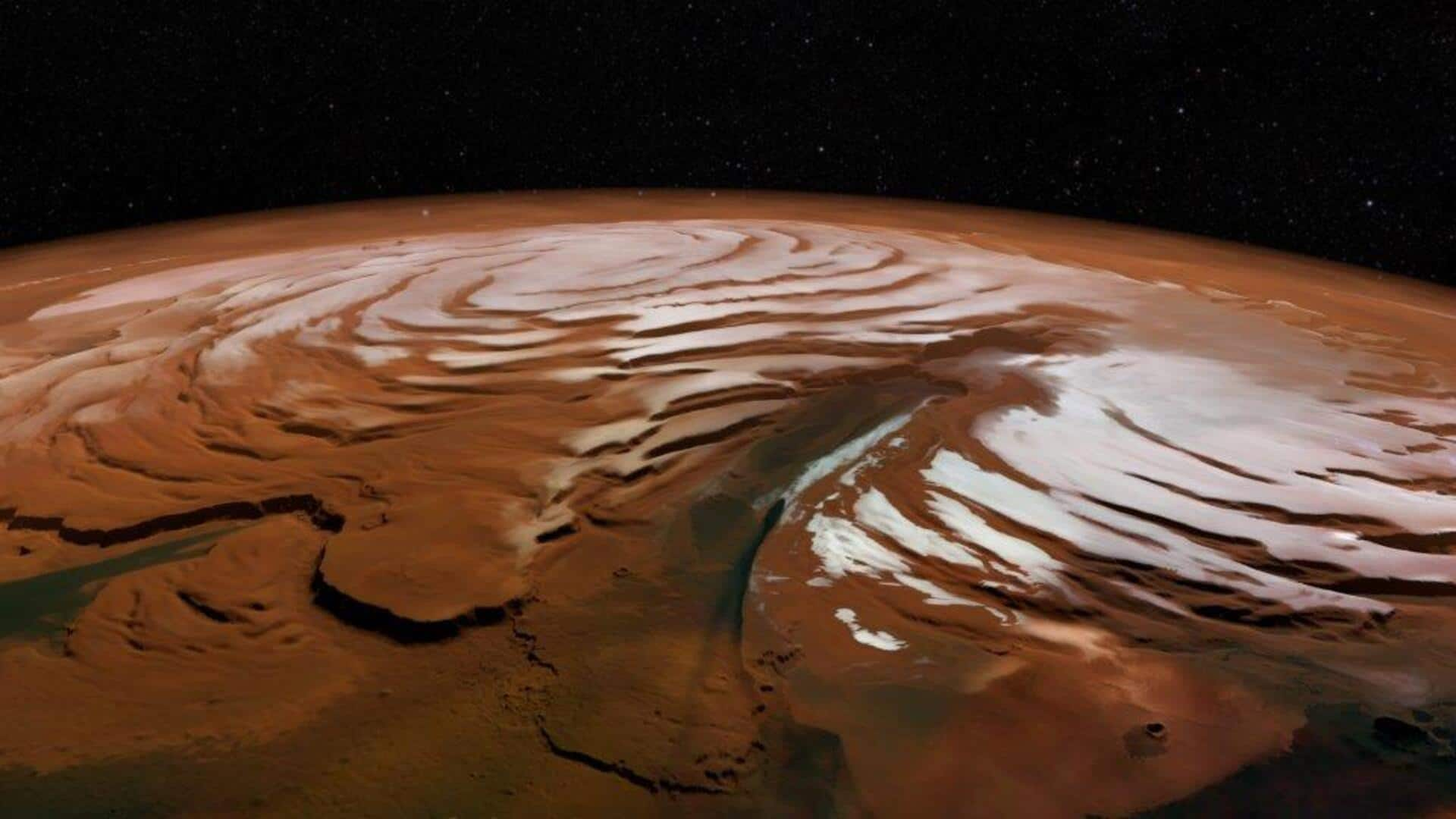
NASA study suggests Mars ice holds secrets of past life
What's the story
A recent NASA-backed study has suggested that traces of ancient microbial life could be preserved in the ice on Mars. The research found that pure ice can preserve organic material for as long as 50 million years, possibly even longer. This gives hope to future human missions looking for signs of life beneath the Martian surface.
Research findings
Microbial remnants could survive for up to 50 million years
The study found that microscopic remnants of long-dead organisms could survive in Mars's ice for up to 50 million years. This is much longer than previously thought, even under extreme conditions. The researchers simulated the Martian environment in a lab using E. coli bacteria and pure water ice, exposing them to high levels of radiation like those on Mars.
Unexpected resilience
Future missions may find Martian surface bacteria
The results of the experiment surprised the researchers, as over 10% of amino acids—the building blocks of proteins—remained unharmed. "Fifty million years is far greater than the expected age for some current surface ice deposits on Mars. That means if there are bacteria near the surface of Mars, future missions can find it," said Christopher House from Penn State University.
Shielding effect
Pure ice protects organic compounds from radiation damage
The study also found that pure ice can protect organic compounds from radiation damage. When radiation hits ice mixed with minerals, it creates reactive radicals that move freely and destroy amino acids. But solid ice traps these radicals in place, minimizing damage. "While in solid ice, harmful particles created by radiation get frozen in place and may not be able to reach organic compounds," said Pavlov, one of the researchers.
Decay influences
Clay minerals don't protect against radiation damage
The study also found that clay minerals like montmorillonite don't protect against radiation damage. In fact, they could even accelerate molecular decay by creating thin liquid films that allow radiation to penetrate more easily. Temperature also played a key role in the experiment. Under warmer, Mars-like conditions, amino acids decayed faster than in the frigid, Europa-like environment.
Water influence
Water content also affects organic decay
The study also looked at how water content affects organic decay. It found that radicals formed in pure ice couldn't move easily, but could travel through thin liquid-like layers in minerals with small amounts of water and break molecules apart faster. This explains why ice is a better long-term protector than wet clay or rock mixtures, even after exposure.